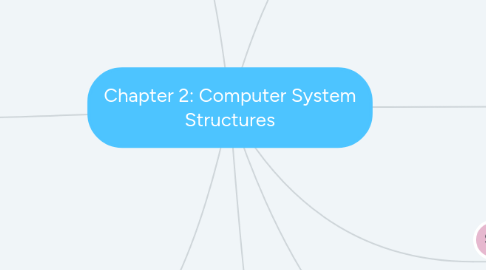Chapter 2: Computer System Structures
af ALVIN LIM FANG CHUEN


1. I/O Structure
1.1. Synchronous
1.1.1. Wait instruction idles the CPU until the next interrupt
1.1.2. Wait loop
1.1.3. At most one I/O request is outstanding at a time, no simultaneous I/O processing
1.2. Asynchronous
1.2.1. System call – request to the operating system to allow user to wait for I/O completion
1.2.2. Device-status table contains entry for each I/O device indicating its type, address, and state
2. Interrupt Handling
2.1. When the CPU is interrupted, it stops what it is doing and immediately transfers execution to a fixed location
2.2. e fixed location contains the starting address of the interrupt service routine
2.3. Interrupt vector provide the address of the interrupt service routine for the interrupting device
3. Storage Hierarchy
3.1. Storage systems organized in hierarchy based on speed ,speed ,volatility.
3.1.1. Register
3.1.2. Cache
3.1.3. Main memory
3.1.4. Electronic Disk
3.1.5. Magnetic Disk
3.1.6. Optical Disk
3.1.7. Magnetic Tapes
4. Storage Structure
4.1. Main memory – only large storage media that the CPU can access directly
4.2. Secondary storage – extension of main memory that provides nonvolatile storage capacity
5. Computer-System Operation
5.1. General-purpose computer system consists of one or more CPUs and a number of device controllers.
5.2. Device controller has a local buffer
5.3. CPU and device controllers can execute concurrently.
6. Dual-Mode Operation
6.1. ensure the proper execution of the operating system
6.2. Provide hardware support to differentiate between at least two modes of operation
7. Modes of Operation
7.1. User Mode
7.1.1. user program executes in user mode
7.1.2. certain areas of memory are protected from user access
7.2. Kernel Mode
7.2.1. monitor executes in kernel mode
7.2.2. privileged instructions may be executed
